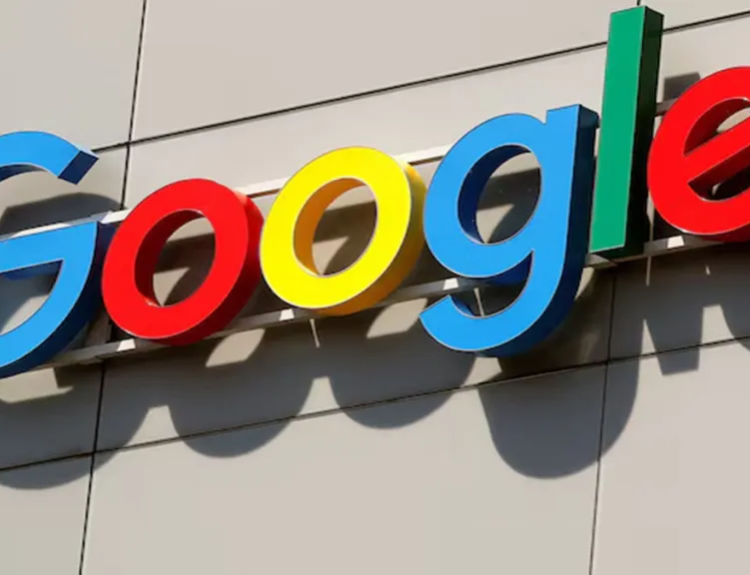In the spring of 2025, Apple stores across the United States have become unexpected hubs of chaos, with crowds rivaling those seen during Black Friday sales. Shoppers are snapping up iPhones at a feverish pace, driven by a single, looming fear: that new U.S. tariffs on Chinese-made goods will soon make their favorite smartphones significantly more expensive. According to a
, Apple employees noted a dramatic surge in store traffic over a recent weekend, with one worker comparing the scene to the peak holiday shopping rush in December. The trigger? President Donald Trump’s latest trade policy, which imposes tariffs as high as 125% on products imported from China—where the vast majority of iPhones are assembled.
Understanding Tariffs: The Cost Crunch Explained
To grasp why iPhone fans are rushing to stores, we need to unpack what tariffs are and how they could reshape pricing. Tariffs are taxes imposed by governments on imported goods, often used to protect local industries, generate revenue, or apply pressure in trade disputes. The current U.S. tariffs, announced in April 2025, target China with rates up to 125%, a sharp escalation in a long-simmering trade war. Since Apple relies heavily on Chinese manufacturing—primarily through partners like Foxconn—these tariffs directly threaten its supply chain.
Here’s a simplified breakdown of the impact: When a tariff is applied, the cost of importing a product into the U.S. rises. For an iPhone, this means Apple’s expense to bring each unit from China increases. The company then faces a choice—absorb the added cost, which cuts into profits, or pass it on to consumers through higher prices. Given Apple’s premium brand and profit margins (estimated at 30-40% on iPhones, per Counterpoint Research), many assume price hikes are inevitable. But the reality is more layered.
Consider a hypothetical iPhone with a $400 import cost (covering components, assembly, and shipping) and a retail price of $1,000. A 125% tariff on that $400 adds $500, raising the import cost to $900. To maintain its margin, Apple might push the retail price to $1,350-$1,400—a 35-40% increase. However, this assumes Apple passes on the full tariff, which isn’t guaranteed. Analysts, like those cited in a Reuters report, suggest that if Apple fully passed on a lower 54% tariff, a $799 iPhone 16 could rise to $1,142, a 43% jump. With the current 125% rate, the increase could be steeper, though Apple’s pricing strategy involves more than just tariff math.
Apple’s supply chain is a global web, with components sourced from South Korea (Samsung displays), Taiwan (TSMC chips), and beyond. Tariffs on these parts, or on final assembly, add complexity. Apple could negotiate lower supplier costs, tap its $174 billion cash reserve (per Bloomberg), or adjust margins to cushion the blow. Still, the uncertainty—amplified by headlines about “125% tariffs”—has consumers acting now to avoid potential sticker shock.
Apple’s Response: Stockpiling and Supply Chain Chess
Apple isn’t standing still as tariffs loom. The company has a track record of dodging economic pitfalls, and it’s pulling out all the stops this time. According to
, Apple has been stockpiling iPhones in the U.S., with five plane loads of devices flown from India and China in late March 2025. This preemptive move ensures a tariff-free inventory buffer, allowing Apple to sell these units at current prices while it recalibrates.
Stockpiling is just the short game. Apple’s long-term play is diversifying its manufacturing footprint. China has been the heart of iPhone production for decades, thanks to its unmatched infrastructure and supplier ecosystem. But trade wars, starting with tariffs in 2018, exposed the risks of this reliance. Apple began shifting production to India, Vietnam, and Malaysia, with India emerging as a standout. A Times of India report notes Apple’s push to ramp up Indian production, where lower labor costs and government incentives reduce costs. India’s tariff rate of 26% (per The New York Times) is a fraction of China’s 125%, offering significant savings.
Let’s crunch the numbers: A $400 import cost from China incurs a $500 tariff (125%), totaling $900. From India, the same cost faces a $104 tariff (26%), totaling $504—a $396 savings per unit. Scaled across millions of iPhones, this is a lifeline. Vietnam, with a 46% tariff, is another option, though less attractive. Apple’s Indian facilities, run by Foxconn and Tata, now produce models like the iPhone 14 and 15, but they account for only 10-15% of output, per Reuters. China remains king—for now.
This pivot isn’t without hurdles. Scaling up in new countries requires years to build factories, train workers, and ensure quality matches China’s standards. Component supply chains—chips from Taiwan, batteries from China—still face tariff risks, even if assembly moves. A Wall Street Journal analysis warns that shifting entirely away from China could take a decade, and rushed moves risk production snafus. Apple’s balancing act—stockpiling to delay price hikes, diversifying to reduce future costs—shows a company adapting under pressure, but not without limits.
Panic Buying: Savvy or Senseless?
The heart of this story is the shoppers packing Apple stores. Why the frenzy? The
describes customers driven by tariff fears, with employees fielding constant questions about price hikes. One worker called it a “holiday-level” rush. This behavior reflects a “buy now, save later” mindset—if prices jump, securing an iPhone at $799 beats paying $1,100 later.
Let’s weigh the logic:
Why It Makes Sense:
- Cost Savings: A 20-30% price hike—$160-$240 on a $799 iPhone—would sting. For those planning an upgrade, buying now locks in savings. CNN Business notes that even small increases add up over time.
- Stock Concerns: High demand could deplete popular models like the iPhone 16 Pro. Early buyers avoid backorders or inflated reseller prices on platforms like eBay.
- Business Case: Companies or heavy users reliant on Apple’s ecosystem (Mac, iPad, Watch) might stock up to dodge future budget hits.
Why It’s Questionable:
- Uncertain Impact: No one knows how much prices will rise. Apple’s mitigation—stockpiling, cost-cutting—might limit hikes to 5-10%, per Bloomberg. A $40-$80 difference hardly justifies panic.
- Unnecessary Upgrades: If your iPhone 13 or 14 still performs well, buying now wastes money. Apple’s trade-in program (detailed on Apple’s site) can offset costs, but it’s not a free pass.
- Market Dynamics: Mass buying could create artificial shortages, driving up prices via scalpers—a self-fulfilling prophecy.
This as a classic case of fear outpacing facts. Panic buying often stems from uncertainty, amplified by media and social media. A CBS News report found 38% of consumers felt pressured to buy tech early, fueled by tariff buzz. Posts on X, like one from @CNET noting store surges, add to the noise. Yet, critically, the tariff’s full impact won’t hit until next quarter, per Bloomberg. For users needing a phone—say, for iOS 18’s AI features or a dying battery—buying now is defensible. Otherwise, waiting could reveal Apple’s pricing strategy or post-rush deals.
Tariffs’ Wider Reach: Tech and Trade in Flux
This iPhone panic is a microcosm of larger shifts in global trade. Apple’s China-heavy supply chain, once a strength, is now a vulnerability in a world of tariffs and decoupling. The U.S.-China trade war—marked by Trump’s policies and China’s retaliatory tariffs of up to 104% (per The New York Times)—has made tech a geopolitical battleground.
Supply Chain Evolution: China’s manufacturing dominance—cheap labor, vast factories—drove the tech boom. But tariffs, plus disruptions like COVID-19, have companies diversifying. Apple’s India push aligns with Google’s Pixel production in Vietnam and Samsung’s factories in Southeast Asia, per Reuters. Still, China supplies critical components (batteries, magnets), so tariffs on these could raise costs regardless of assembly location.
hints at a cycle: U.S. tariffs spark Chinese retaliation, prompting harsher U.S. measures. This could inflate prices for electronics, cars, and more, per The Wall Street Journal. For phone buyers, it’s a triple threat—pricier iPhones, accessories, and rival devices.
Industry Impact: If iPhone prices rise, competitors could pounce. Samsung, with 60% of production in Vietnam (46% tariff), might undercut Apple, per Bloomberg. Budget brands like Xiaomi face China’s tariffs but could absorb hikes better due to lower prices. If component costs climb—say, for TSMC chips—prices could rise across brands, per Reuters.
Could tariffs bring manufacturing to the U.S.? Trump’s pushed this, but high labor costs and infrastructure gaps make it unlikely soon. Apple’s Texas Mac Pro assembly exists, but iPhones are a tougher lift, per The New York Times.
Smartphone Market Shifts: Opportunities and Risks
How will tariffs reshape the mobile landscape? Here’s a breakdown:
Apple’s Position: Apple’s ecosystem—iMessage, AirPods, seamless integration—keeps fans loyal, even at $1,200 per iPhone, per Counterpoint Research. But steep hikes could push budget buyers toward the $599 iPhone SE or rivals. If Apple absorbs costs, it holds share; if not, it risks erosion.
Rivals’ Moves:
- Samsung: Vietnam’s lower tariffs give Galaxy S25 models an edge. Foldables like the Z Flip 6 could shine if iPhones soar, per The Verge.
- Google: Pixel 9’s Vietnam production and AI features (priced at $699) could lure switchers, per TechRadar.
- Chinese Brands: Xiaomi and Oppo face China’s tariffs but might pivot to India faster, keeping costs low, per Bloomberg.
Unpredictable Factors:
- Component Tariffs: If chips or displays face levies, all phones get pricier.
- Consumer Pushback: Public outcry could soften tariffs, per CNN Business.
- Refurbished Market: Price hikes might boost used phones, with Apple’s refurbished store gaining traction.
Advice for iPhone Shoppers
- Buy Now If: Your phone’s struggling, or you want iOS 18’s perks. Trade-ins via Apple can save hundreds.
- Wait If: Your device works fine. Apple’s moves might cap hikes, and deals could emerge post-frenzy. Monitor via Slickdeals.
- Stay Informed: Apple’s May 2025 earnings call or tariff news could clarify things. Check Bloomberg or Reuters.
The panic buying reflects real fears but also media-driven hype. Apple’s not helpless—it’s stockpiling, diversifying, and strategizing. Yet, tariffs expose a truth: tech isn’t immune to global chess games. Whether you’re grabbing an iPhone 16 or holding out for the 17, this moment reminds us to think critically, not react blindly. The smartphone world is changing—stay sharp.








